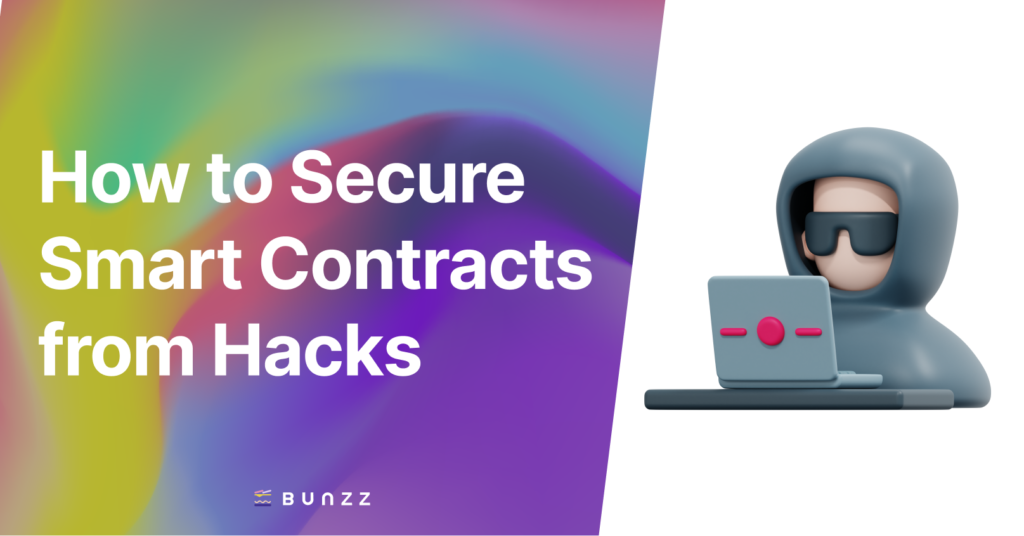Smart contracts, the self-executing contracts with agreement terms embedded directly in lines of code, are changing how businesses operate in the blockchain realm. Smart contracts are powerful tools but they are not immune to cyber threats. In recent years, the blockchain community has seen multiple high-profile smart contract hacks, leading to significant financial losses.
This article provides a comprehensive overview of how to Secure Smart Contracts from Hacks, covering best practices for developers and tips for users.
Who needs to read this?
This article is intended for smart contract developers and users of smart contracts. Developers will learn about the most common smart contract vulnerabilities and how to mitigate them. Users will learn how to identify trustworthy smart contracts and interact with them safely.
Smart Contract Vulnerabilities
Smart contracts can be vulnerable to a variety of attacks, including:
- Reentrancy: An attacker exploits a flaw in the smart contract to execute a function repeatedly, allowing them to steal funds or perform other malicious activities.
- Arithmetic overflows: Overly large numbers, beyond the capacity of the smart contract’s data type, can be manipulated by attackers.
- Type confusion: Smart contracts can be exploited if they expect a certain data type and receive a different one.
- Gas optimization and denial-of-service (DoS) attacks: Attackers may craft malicious contracts that consume excessive gas or send numerous transactions to render a smart contract unusable.
Security Measures for Developers
Developers can take a number of steps to improve the security of their smart contracts, including:
- Following best practices:
- Opt for secure programming languages like Solidity, designed specifically for smart contract development.
- Ensure that your code is clear, concise, and easy to read. This transparency aids in vulnerability detection.
- Implement unit tests to detect and rectify bugs before deployment.
- Have your smart contract audited by third-party security firms to identify potential security gaps.
- Utilizing access controls: Implement robust access controls to determine who can access and modify the contract.
- Exercising caution with arithmetic: Always check for potential overflow and underflow conditions when performing arithmetic operations.
- Implementing reentrancy guards: These guards protect against attacks where a function might be triggered multiple times before its initial execution ends.
- Staying updated: Smart contract security is dynamic. Keep abreast of the latest security trends, and promptly update your contracts when vulnerabilities are found.
- Trusting your compiler: Ensure that your compiler, which translates your code for blockchain execution, is trustworthy and devoid of vulnerabilities.
- Securing wallet: Utilize a wallet with enhanced security features, such as strong passwords and two-factor authentication, for deploying and interacting with your smart contracts.
Safety Tips for Users
Those who use blockchain Apps and platforms can take the following steps to improve their security when interacting with smart contracts and DApps:
- Interact with trustworthy contracts only: Ensure that the smart contract has undergone a reputable security audit and maintains a stellar security record.
- Thoroughly review the contract code: If you’re technically equipped, read and understand the contract code to spot potential vulnerabilities.
- Begin with minimal funds: When testing a new smart contract, start with a smaller amount. In the event of a breach, this limits potential losses.
- Be vigilant of phishing scams: Avoid disclosing personal information and scrutinize emails or websites asking for such details.
Conclusion
While smart contracts promise to transform numerous industries with their decentralized approach, they are still in their early stages of development and susceptible to cyber-attacks. By adhering to the guidelines above, developers can bolster their smart contract security, and users can confidently and safely navigate the blockchain realm.
Always remember, with the rapid technological shifts in the blockchain space, continuous learning and adaptability are essential for ensuring the security and efficacy of smart contracts.







